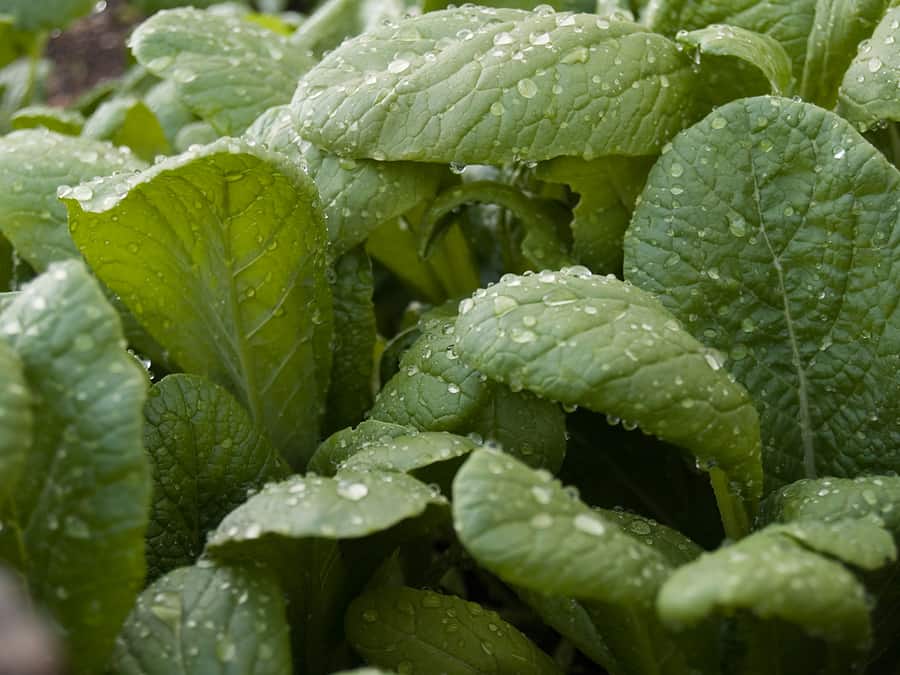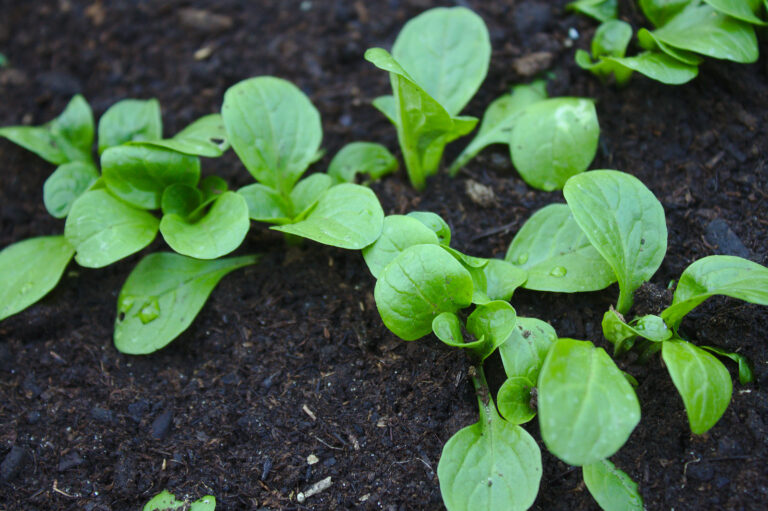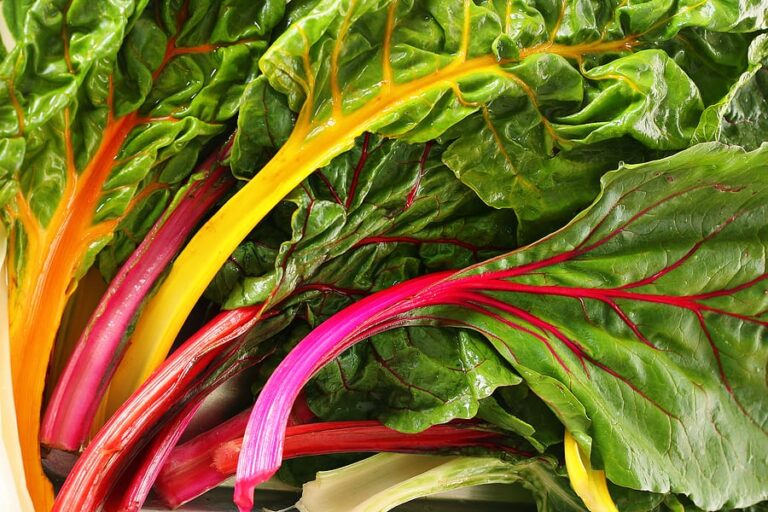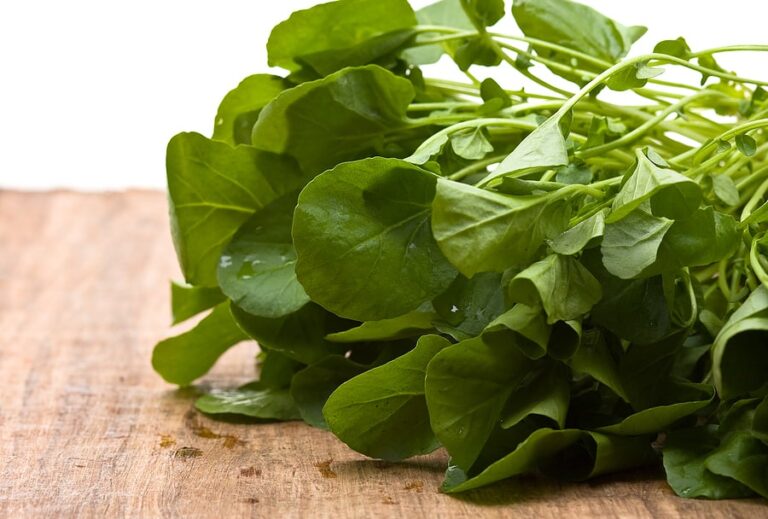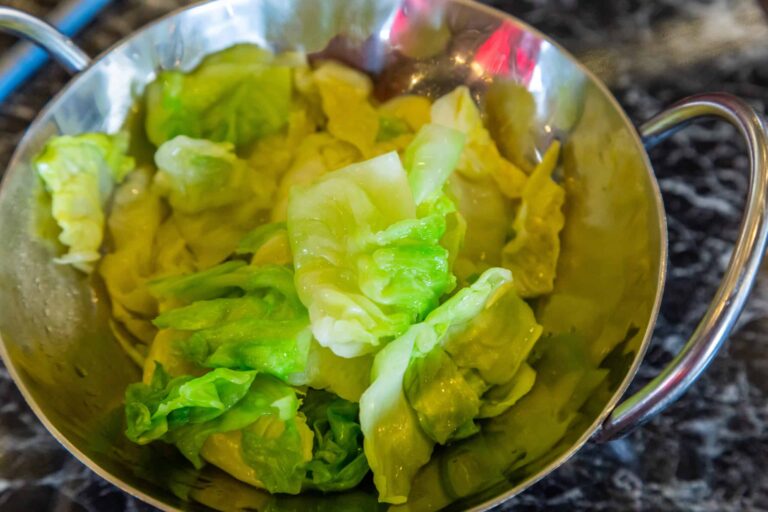The Ultimate Mustard Greens Growing Guide: From Seed to Harvest
Mustard greens are leafy, nutrient-dense vegetables from the Brassica family, known for their peppery, slightly spicy flavor that can range from mild to sharp depending on the variety. The leaves vary in shape and texture, from smooth and flat to curly and frilly, with colors ranging from deep green to purple. These greens are commonly grown in cool weather, making them popular in both early spring and fall gardens. They’re packed with vitamins A, C, and K, as well as antioxidants and fiber, offering numerous health benefits.
In the kitchen, mustard greens add a flavorful punch to dishes and are used in various cuisines worldwide. They can be eaten raw in salads, where their spicy kick complements other greens, or cooked, which mellows their bite. Sautéing, steaming, or braising mustard greens softens their texture and makes them perfect for side dishes, soups, and stews. In Southern cuisine, for example, they’re often cooked with onions, garlic, and smoked meats for a hearty, comforting dish. Mustard greens are also used in Asian dishes, including stir-fries and pickling, bringing depth and spice to many traditional meals.
Types of mustard greens
The primary difference between plain leaf and curled leaf mustard varieties lies in their leaf texture and appearance, which also influences their culinary uses and textures in dishes. Plain leaf mustard varieties, like Florida Broad Leaf and Tendergreen, have smooth, broad leaves with a tender texture that is well-suited to fresh salads, stir-fries, and sautés. Their mild flavor makes them versatile and easy to incorporate into a variety of dishes. Curled leaf mustard varieties, such as Southern Giant Curled and Green Wave, have highly ruffled, frilly leaves that add visual interest and a more pronounced, sometimes peppery flavor. Their robust texture holds up well when cooked, making them ideal for hearty dishes where the greens are braised, simmered, or added to soups for both texture and flavor.
Mustard greens varieties
Plain leaf varieties
- Florida Broad Leaf (43-50 days): This variety has large, smooth, and broad green leaves with a mild, pleasant flavor. Ideal for both salads and cooked dishes, it’s resistant to bolting.
- Tendergreen (34-40 days): A fast-growing variety, Tendergreen produces smooth, tender leaves with a mild flavor. It’s versatile and ideal for use in salads or sautéed.
Curled leaf varieties
- Fordhook Fancy (40 days): This variety produces deeply curled, bright green leaves with a mild yet tangy flavor. It’s cold-tolerant and makes a great addition to salads or as a cooked green.
- Red Giant (23 days): Known for its large, burgundy-tinted leaves, Red Giant offers a spicy, peppery flavor that intensifies as it matures. It’s fast-growing and adds striking color to the garden.
- Green Wave (45 days): With heavily curled, green leaves, Green Wave has a bold, spicy taste. This hardy, heat-tolerant variety retains its texture and flavor even in warmer weather.
- Southern Giant Curled (40 days): This Southern favorite features ruffled, frilly leaves with a strong, mustardy flavor. It’s highly productive and holds well in the garden.
Mustard greens vs. Oriental mustard cabbage
Oriental mustard cabbage and mustard greens are related but not the same; they belong to the same Brassica family and share some similarities in flavor and texture. However, they differ in specific characteristics and culinary uses.
Oriental mustard cabbage typically refers to varieties like Bok Choi, Choi Sum, and Dai Gai Choy, which have broader, thicker leaves and a more pronounced crunch, especially in the stalks. These varieties tend to be milder in flavor compared to traditional mustard greens, making them popular in Asian cuisine for stir-frying, steaming, and soups.
Mustard greens, on the other hand, usually have thinner, frilly leaves with a more robust, peppery flavor. They are commonly used in Southern cooking, salads, and as side dishes, often sautéed or added to soups and stews. While both can provide a spicy, tangy note to dishes, the distinct textures and flavors make them suitable for different culinary applications.
Oriental mustard cabbage – green stalk varieties
- Chinese Pac Choi (60 days): This classic variety has crisp, green stalks with dark green leaves and a mild, slightly sweet flavor. Perfect for stir-fries, it’s both tender and juicy.
- Choi Sum (60 days): Producing small, tender leaves and green stalks, Choi Sum has a mild, cabbage-like flavor. It’s best harvested young for a tender, sweet taste in Asian dishes.
- Dai Gai Choy (65 days): This variety features thick, green stalks and dark green leaves with a mild, slightly peppery taste. It’s excellent for steaming or adding to soups.
Oriental mustard cabbage – white stalk varieties
- Bok Choi (45-60 days): Known for its crisp white stalks and tender green leaves, Bok Choi has a mild, slightly peppery flavor. It’s a staple in stir-fries and soups.
- Chinese Flat Cabbage (40 days): A quick-growing variety with flat, white stalks and mild-tasting leaves. It’s perfect for raw salads or lightly cooked dishes.
- Green-In-Snow (45 days): This hardy variety features tender green leaves with a mild mustard flavor, and is highly frost-tolerant, even thriving in winter conditions.
- Joi-Choi (45-50 days): With thick, white stalks and glossy, dark green leaves, Joi-Choi is a robust and tender variety. Its mild flavor makes it versatile for both raw and cooked dishes.
When to plant mustard greens
The best time to plant mustard greens is during the cooler months of early spring or late summer to early fall. In spring, you can sow seeds outdoors 4–6 weeks before the last expected frost date, as mustard greens thrive in cool weather and can tolerate light frosts. For a fall harvest, plant seeds about 6–8 weeks before the first expected frost date, as the cooler temperatures enhance the flavor of the greens and help prevent bolting. These flexible planting times allow for successive planting, giving you a continuous harvest of tender, flavorful mustard greens throughout the cooler seasons.
To grow mustard greens in winter, plant them in a cold frame, greenhouse, or under row covers to protect them from extreme temperatures and frost. Mustard greens are frost-tolerant, and using these protective methods can extend their growing season in colder climates. Mulching around the plants also helps retain soil warmth and moisture, making it easier for mustard greens to thrive even in winter.
Where to plant mustard greens
The best place to grow mustard greens is in a sunny location with well-draining soil, although they can tolerate some partial shade. Mustard greens prefer slightly acidic to neutral soil with a pH range of 6.0 to 7.5. To prepare the soil, start by loosening it to improve aeration and drainage, then incorporate plenty of organic matter, such as compost or well-rotted manure, to enrich it with nutrients and retain moisture. If the soil pH is below 6.0, you can add lime to raise it, or sulfur if it’s above 7.5, ensuring the soil is balanced for optimal growth. This fertile, well-prepared soil will provide mustard greens with the nutrients they need for a lush, productive season.
How to plant mustard greens
To start mustard greens from seed outdoors, plant seeds directly into prepared garden soil about 4–6 weeks before the last expected frost date in spring or 6–8 weeks before the first frost date in fall. Mustard seeds should be sown about 1/4 inch deep and spaced approximately 4–6 inches apart in rows, with rows about 12–18 inches apart. After sowing, cover the seeds lightly with soil and keep the soil consistently moist until germination, which usually occurs within 5–10 days. Thinning young plants to about 6 inches apart will allow them enough space to grow to full size.
If starting seeds indoors, plant them in small pots or seed trays filled with a quality seed-starting mix 4–6 weeks before the outdoor planting date. Sow seeds about 1/4 inch deep and keep them in a warm, sunny location or under grow lights. Once the seedlings have two sets of true leaves and are about 2–3 inches tall, they’re ready for hardening off—a process where they’re gradually exposed to outdoor conditions over a week.
After hardening off, transplant the seedlings into the garden, spacing them about 4–6 inches apart in well-prepared soil with added compost or organic matter. Ensure they’re planted at the same depth they were in their pots, and water them well after transplanting. This care will help them establish quickly and produce a steady supply of greens through the season.
How to care for mustard greens
Watering mustard greens is crucial for their growth, as they prefer consistently moist soil. To achieve this, ensure the soil is evenly moist but not waterlogged, as overwatering can lead to root rot. Water regularly, especially during dry spells, aiming for about 1 inch of water per week, either through rainfall or supplemental irrigation. Using mulch around the plants can help retain soil moisture and reduce evaporation, while also suppressing weeds that compete for nutrients.
Feeding mustard greens is essential to support their vigorous growth, as they are heavy feeders. Incorporate a balanced fertilizer, such as a 10-10-10 formulation, every 3–4 weeks throughout the growing season. You can also use organic options like compost or well-rotted manure, which not only provide essential nutrients but also improve soil structure and fertility. Applying fertilizer during the early growth stages will encourage strong leaf development and overall plant health, allowing for a more robust harvest.
In addition to watering and feeding, caring for mustard greens involves monitoring for pests and diseases, as these greens can be susceptible to issues such as aphids, caterpillars, and downy mildew. Regularly inspect the plants for signs of pest damage and use organic pest control methods when necessary, such as insecticidal soap or handpicking pests. Maintaining good garden hygiene, including crop rotation and proper spacing for airflow, will also help prevent diseases. By diligently watering, feeding, and caring for your mustard greens, you can enjoy a bountiful harvest throughout the growing season.
Harvesting and storing mustard greens
Harvesting mustard greens can begin when the leaves are young and tender, usually around 4 to 6 weeks after planting. The best time to harvest is in the morning when the leaves are crisp and full of moisture. You can either pick individual outer leaves, cutting them at the base to encourage further growth, or harvest the entire plant if it has reached a desirable size. For continued production, it’s recommended to take the outer leaves first, allowing the center of the plant to keep growing and producing fresh leaves for several weeks.
Once harvested, it’s essential to store mustard greens properly to maintain their freshness. Place the greens in a plastic bag, making sure to leave it slightly open to allow for air circulation, and store them in the refrigerator’s crisper drawer. This can keep them fresh for up to a week. For longer storage, you can blanch the mustard greens in boiling water for about 2 minutes, then immediately transfer them to an ice bath to stop the cooking process. After cooling, drain and pat them dry, then store the blanched greens in airtight freezer bags or containers. This method preserves their flavor and nutritional value, allowing you to enjoy them in various dishes throughout the season.
More mustard greens growing details
Mustard is a cool-season crop. Mustard matures in 30 to 50 days so time the planting for harvest when the average temperature is around 60° to 65°F (16°-18°C).
Mustard bolts easily so it is often grown for autumn harvest, but it can be grown as a spring crop where spring weather tends to stay cool.
Sow mustard seeds in the garden 2 to 4 weeks before the last frost. Start transplants indoors 4 to 6 weeks before setting them out in the garden. Transplants can be set in the garden from 5 weeks before to 2 weeks after the last frost.
Related articles:
Make succession plantings every 10 to 14 days in spring until the temperatures begin to rise.
Sow mustard for a fall harvest 8 weeks before the first expected fall frost.
Mustard tolerates many kinds of soil but grows best in moist, humus-rich soil. Mustard can tolerate partial shade. Mulch to keep the soil cool and moist to prevent bolting.
Mustard leaves about 4 to 5 inches (10-13cm) long have the best flavor. Begin harvesting outer leaves cut-and-come again to prolong the harvest time. The flavor is improved by a mild frost
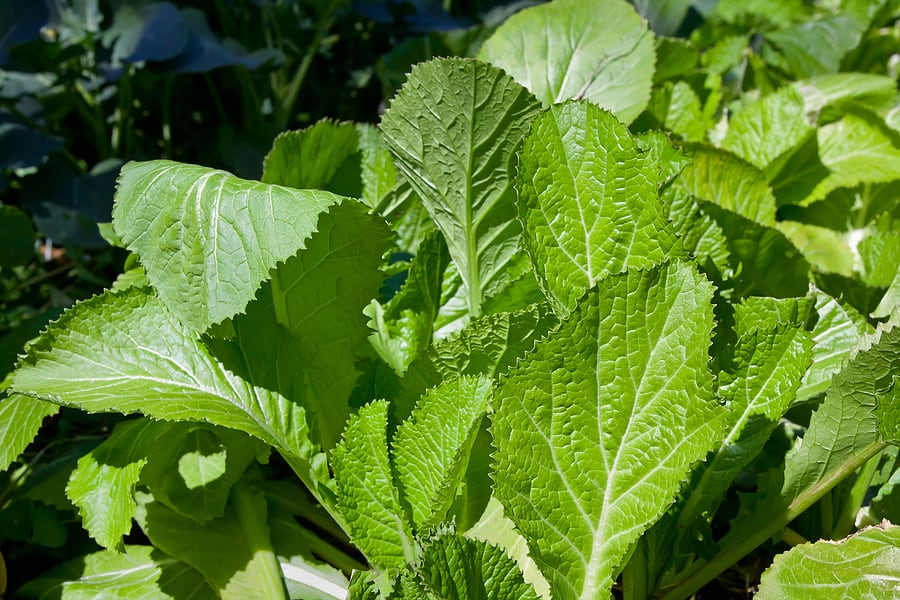
Mustard greens are a cool-season leaf crop. Mustard is a hardy leaf vegetable with a rosette of large light or dark green curly leaves that grow to 3 feet (.9m) tall. Leaves and leaf stalks are eaten and have a peppery flavor. The seeds can be ground and used as a condiment.
Mustard planting details
- Sowing depth: ¼ inch (.6 cm)
- Space between plants after thinning: 6-9 inches (15-23cm)
- Days to sprout: 5-10
- Days to harvest: 30-50
- Storage period: 1-2 weeks
- Seeds per 100-row feet: ¼ ounce (7 grams)
- Yield per 100-row feet: 100 heads
- Suggested varieties: Florida Broad Leaf (bolt resistant), Green Wave (bolt resistant), Southern Giant Curled (good choice for a fall crop)
Here is your complete guide to growing mustard greens!
Mustard greens growing quick tips
- Sow mustard greens as early as 4 to 6 weeks before the average last frost date in spring.
- Sow succession crops every 4 to 6 weeks.
- Mustard greens require 30 to 40 days to reach harvest.
- Plant crops so that they come to harvest before temperatures average greater than 75°F (24°C).
- Sow mustard greens in autumn or early winter in mild winter regions.
- Mustard greens yield: Plant 6 to 10 mustard plants per household member.
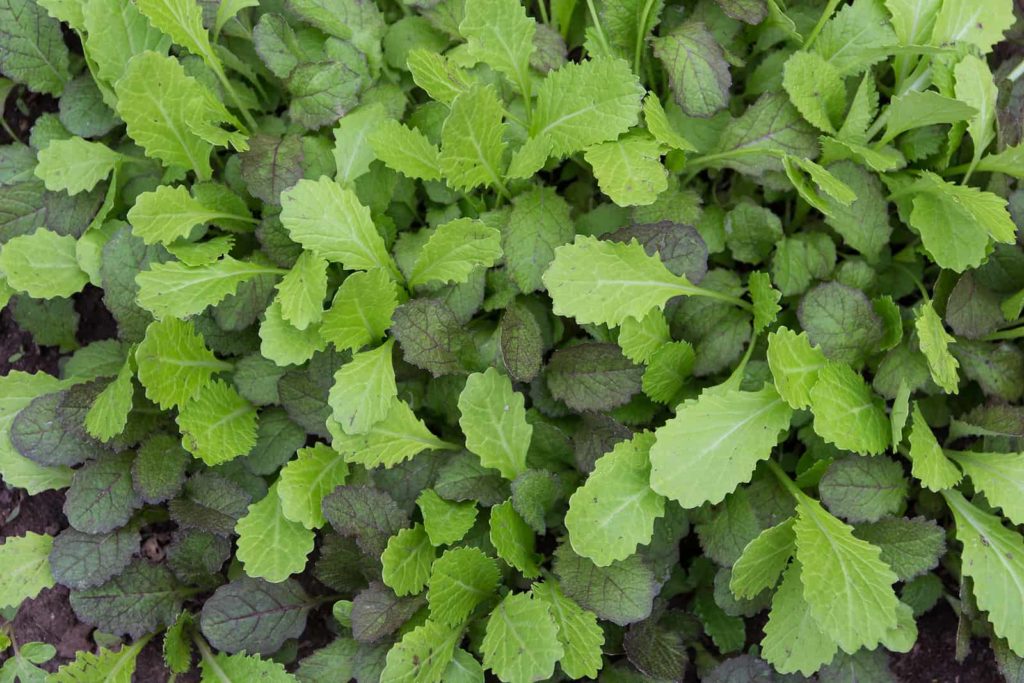
Where to plant mustard greens
- Grow mustard greens in full sun or partial shade.
- Plant mustard in well-worked, well-drained soil rich in organic matter.
- Add aged compost to planting beds before planting.
- Mustard prefers a soil pH of 5.5 to 6.8.
Mustard greens planting time
- Sow mustard as early as 4 to 6 weeks before the average last frost date in spring.
- Sow succession crops every 4 to 6 weeks.
- Mustard requires 30 to 40 days to reach harvest.
- Plant mustard greens so that they come to harvest before temperatures average greater than 75°F (24°C).
- Sow mustard in autumn or early winter in mild winter regions.
- Seeds may be slow to germinate if the soil is too cool, 40°F (4.4°C) or less.
- Mustard grown in hot weather or long days will bolt and go to seed.
(These dates are for the Northern Hemisphere)
| The average date of the last frost | Planting dates |
| Jan. 30 | Jan. 1-Feb. 10 |
| Feb. 8 | Jan. 10-Mar. 1 |
| Feb. 18 | Jan. 15-Feb. 15 |
| Feb. 28 | Feb. 1-Mar. 15 |
| Mar. 10 | Feb. 10-Mar. 20 |
| Mar. 20 | Feb. 20-Apr. 1 |
| Mar. 30 | Mar. 10-Apr. 15 |
| Apr. 10 | Mar. 1-Apr. 20 |
| Apr. 20 | Mar. 20-May 1 |
| Apr. 30 | Apr. 1-May 10 |
| May 10 | Apr. 15-June 1 |
| May 20 | May 1-June 30 |
| May 30 | May 10-June 30 |
| June 10 | May 20-June 30 |
Planting and spacing mustard greens
- Sow mustard seed ½ inch (12mm) deep.
- When seedlings are large enough to handle thin them from 4 to 8 inches (10-20cm) apart.
- Space rows 12 to 24 inches a(30-61cm) part.
Mustard greens companion plants
- Plant mustard greens with other leafy greens, English peas, and snap peas.
Container growing mustard greens
- Mustard can easily be grown in a container.
- Broadcast seeds over the soil surface and cover lightly with soil. Thinnings can be eaten.
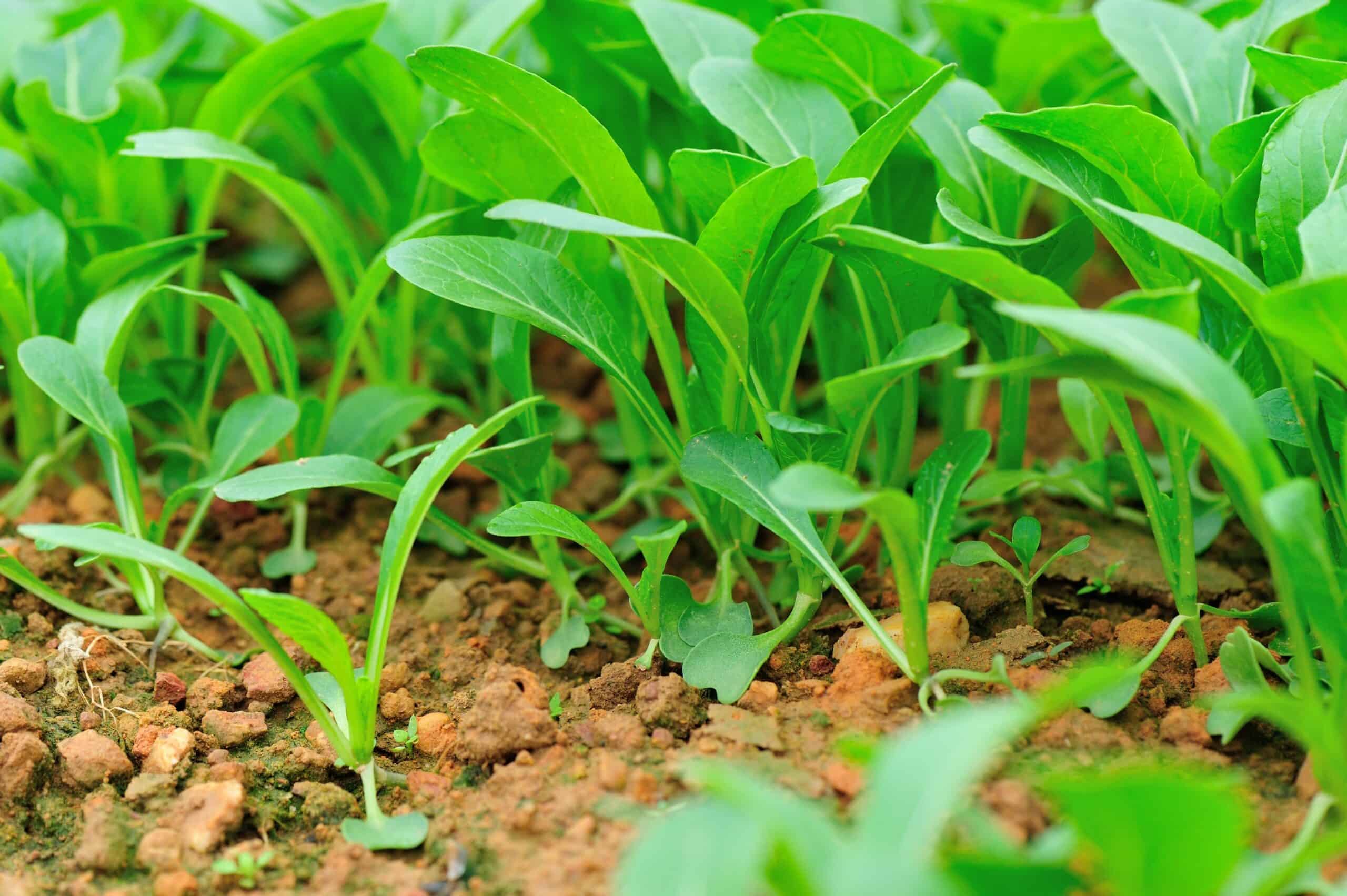
Watering and feeding mustard greens
- Keep soil evenly moist to keep mustard leaves growing quickly. Do not allow the soil to dry out.
- Add aged compost to planting beds before sowing.
- Side-dress mustard plants with aged compost at midseason.
Mustard greens care
- Keep planting beds weed-free.
- Pull mustard from the garden as soon as it goes to seed to avoid prolific self-seeding.
Mustard greens pests and diseases
- Mustard can be attacked by flea beetles and aphids. Wash these pests away with a blast of water.
- Mustard is susceptible to white rust. Remove leaves that have white rust.
- To avoid diseases, water plants at the base of the stem keeping moisture off the leaves.
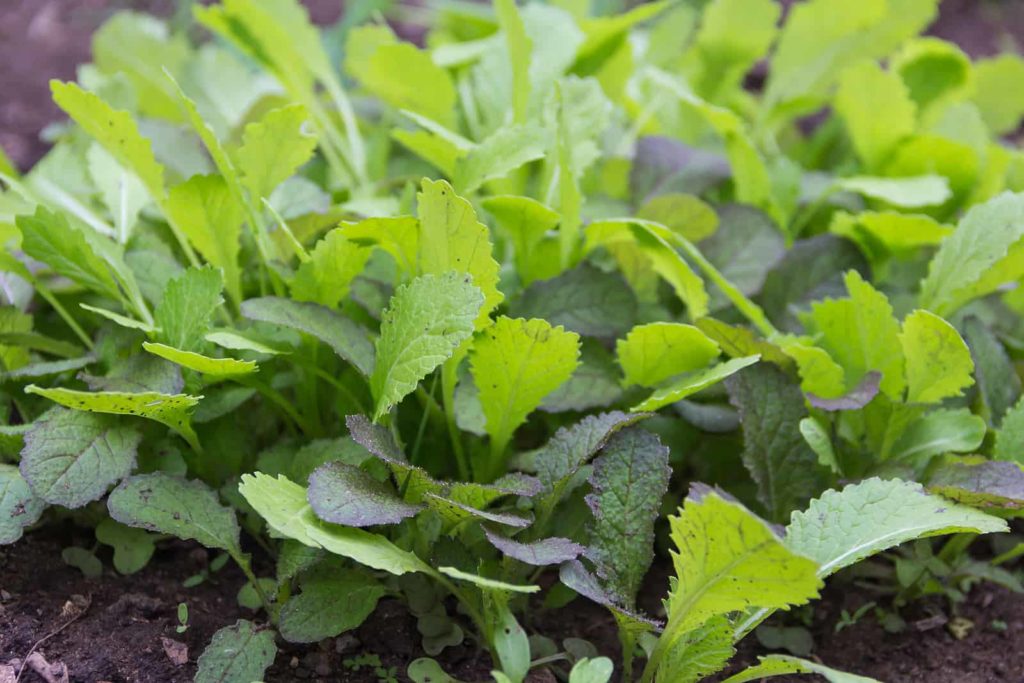
Harvesting mustard greens
- Pick individual leaves when they are young and tender, 3 to 4 inches (7-10cm) long, or cut and use the entire plant.
- Complete the harvest before the weather grows hot; hot weather will cause leaves to become tough and strong flavored.
- Complete the harvest before the plant goes to seed.
Storing and preserving mustard greens
- Mustard will keep in the vegetable compartment of the refrigerator for 2 to 3 weeks.
- Mustard leaves can be frozen or dried. Mustard seeds can be sprouted.
Mustard varieties to grow
- Curled Leaf: ‘Fordhook Fancy’ (40 days); ‘Red Giant’ (23 days); ‘Green Wave’ (45 days); ‘Southern Giant Curled’ (40 days).
- Plain Leaf: ‘Florida Broad Leaf’ (43-50 days); ‘Tendergreen’ (34-40 days).
- Oriental Mustard Cabbage-green stalks: ‘Chinese Pac Choi’ (60 days); ‘Choi Sum’ (60 days); ‘Dai Gai Choy’ (65 days).
- Oriental Mustard Cabbage-white stalks: ‘Bok Choi’ (45-60 days); ‘Chinese Flat Cabbage’ (40 days); ‘Green-In-Snow’ (45 days); ‘Joi-Choi’ (45-50 days).
About mustard greens
- Common name. Mustard, Chinese mustard, leaf mustard, spinach greens
- Botanical name. Brassica juncea
- Origin. Asia
Mustard Growing Hub
Start here: The Ultimate Mustard Growing Guide: From Seed to Harvest
Varieties & Types
- Best Mustard Green Varieties to Grow in Your Garden
- Plain Leaf vs. Curled Leaf Mustard Greens: What’s the Difference?
- Oriental Mustard Cabbage Explained: Green Stalk vs. White Stalk Varieties
- Flavor Profiles of Different Mustard Green Varieties
Planting & Growing
- When to Plant Mustard Greens by USDA Zone
- Mustard Greens Planting Calendar (Month-by-Month Guide)
- The Best Places to Plant Mustard Greens for Healthy Growth
- Proper Spacing for Mustard Greens: Garden and Container Tips
- Mustard Greens Companion Plants for Pest Control and Better Yields
- How to Grow Mustard Greens in Containers Step by Step
Care & Maintenance
- How to Water Mustard Greens for Tender Leaves
- Feeding Mustard Greens: Fertilizer Tips for Fast Growth
- Common Mustard Green Pests and Diseases and How to Control Them Naturally
- Easy Mustard Greens Care Guide for Beginners
Harvest & Serving
- When and How to Harvest Mustard Greens for the Best Flavor
- Delicious Ways to Cook and Serve Mustard Greens
Mustard articles at Harvest to Table:
How to Plant, Grow, and Harvest Mustard Greens
Six Ways to Cook and Serve Mustard Greens
Garden Planning Books at Amazon:
- Vegetable Garden Almanac & Planner
- Kitchen Garden Grower’s Guide Vegetable Encyclopedia
- Vegetable Garden Grower’s Guide
- Tomato Grower’s Answer Book
More how to grow articles:
Learn how to plant, grow, and harvest your favorite vegetables. Click below for all you need to know.
- Artichoke
- Arugula
- Asparagus
- Beans, Snap
- Beets
- Broad Beans
- Broccoli
- Brussels Sprouts
- Cabbage
- Cantaloupe — Melons
- Cardoon
- Carrots
- Cauliflower
- Celeriac
- Celery
- Chard
- Chayote Squash
- Chickpeas
- Chicory
- Chinese Cabbage
- Collards
- Corn Salad
- Corn, Sweet
- Cresses
- Cucumbers
- Eggplant
- Endive and Escarole
- Fava Beans
- Florence Fennel
- Garbanzo Beans
- Garlic
- Horseradish
- Jerusalem Artichoke
- Kale
- Kohlrabi
- Leeks
- Lettuce
- Lima Beans
- Melons
- Mizuna
- Mustard Greens
- New Zealand Spinach
- Okra
- Onions
- Parsnips
- Peanuts
- Peas
- Peppers
- Potatoes
- Pumpkins
- Radicchio
- Radishes
- Rhubarb
- Rutabaga
- Salsify
- Shallots
- Sorrel
- Southern Peas
- Soybeans
- Spinach
- Squash, Summer
- Squash, Winter
- Sunchokes
- Sweet Potato
- Swiss Chard
- Taro
- Tomatillo
- Tomatoes
- Turnips
- Watermelon
- Zucchini

